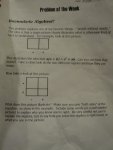Re: dB calculations
A larger speaker will narrow its response at a lower freq than a small speaker. So the "overall energy" changes with freq over area.
If all you are concerned with is the on axis response, and if the sensitivity is the same for both drivers, then the same power in will result in the same SPL (assuming no reflections etc that would affect the total SPL)
I am not aware of any cases in which doubling the power alone will result in more than a 3dB gain.
Power is watts. What other units are you talking about?
It gets A LOT more complicated than that.Am I to understand that 10 watts into a 10" speaker will produce less dbSPL than the same 10 watts into a 100" speaker?
Aside from physical differences that result in forces such as friction and larger mass, 10W should produce the same amount of SPL in any speaker (efficiency not withstanding).
I think there's a whole lotta confusion regarding units of measure. dB SPL is not o let the electrical power being consumed by the driver, but also the mechanical resistance of the cone, cabinet design, and environmental factors such as other drivers nearby.
I think a pure theoretical world, double the power is an additional 3 dB, regardless of the units. In the real world, though, that may result in more than +3 dB SPL.
Yeah?
A larger speaker will narrow its response at a lower freq than a small speaker. So the "overall energy" changes with freq over area.
If all you are concerned with is the on axis response, and if the sensitivity is the same for both drivers, then the same power in will result in the same SPL (assuming no reflections etc that would affect the total SPL)
I am not aware of any cases in which doubling the power alone will result in more than a 3dB gain.
Power is watts. What other units are you talking about?


